Search Result
Results for "
performance
" in MedChemExpress (MCE) Product Catalog:
10
Biochemical Assay Reagents
3
Isotope-Labeled Compounds
| Cat. No. |
Product Name |
Target |
Research Areas |
Chemical Structure |
-
- HY-109121
-
|
CK-2127107
|
Others
|
Cardiovascular Disease
|
|
Reldesemtiv (CK-2127107) is a selective, orally active and next-generation fast skeletal muscle troponin activator (FSTA). Reldesemtiv selectively activates fast skeletal myofibrils with an EC50 of 3.4 μM. Reldesemtiv increases exercise performance in a heart failure model .
|
-
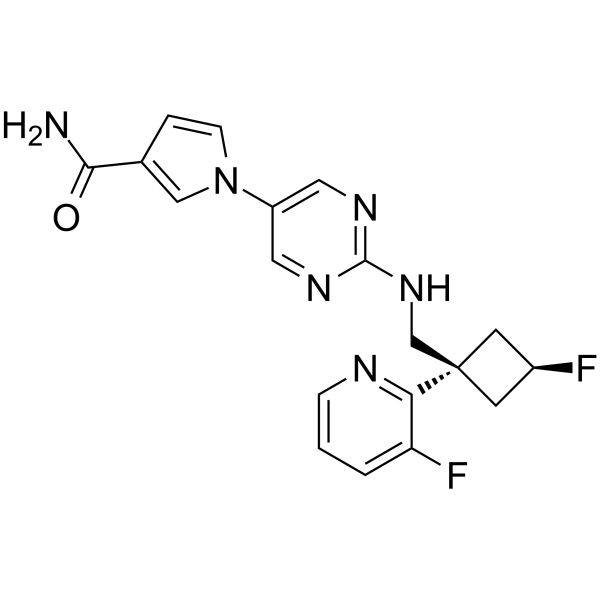
-
- HY-100782
-
|
2-APH; 2-Amino-7-phosphonoheptanoic acid
|
iGluR
|
Neurological Disease
|
|
DL-AP7 is a competitive NMDA antagonist and an anticonvulsant. DL-AP7 blocks the NMDA-induced convulsions and impairs learning performance in a passive avoidance task in mice .
|
-
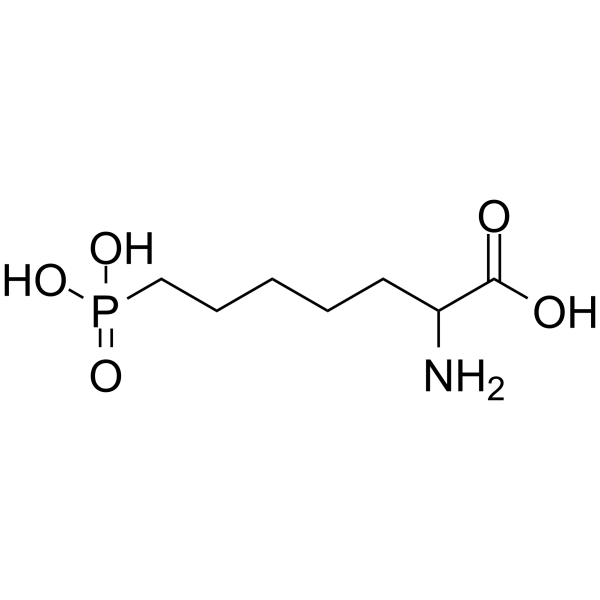
-
- HY-151950
-
-
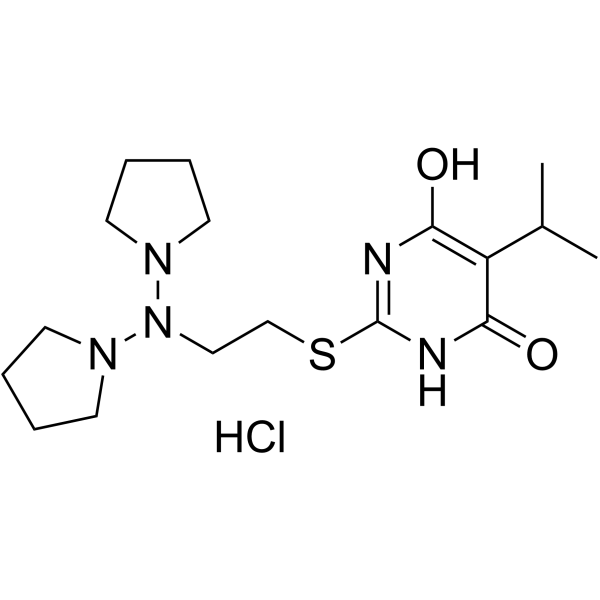
-
- HY-151951
-
-
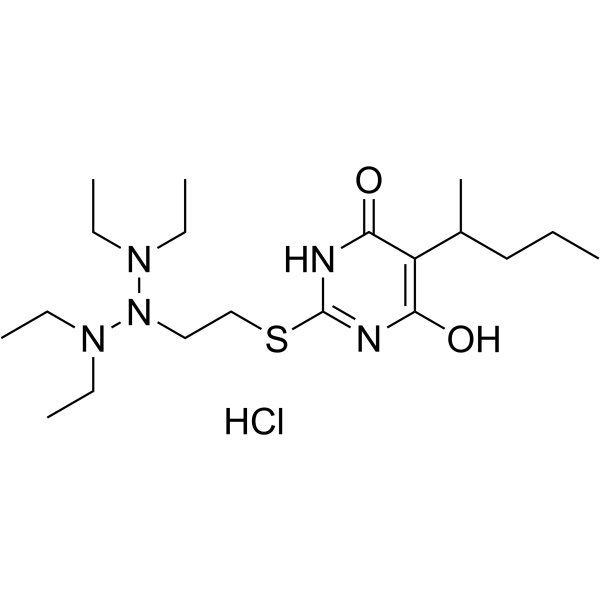
-
- HY-149975
-
|
|
iGluR
|
Neurological Disease
|
|
AMPA receptor modulator-4, a 3,4-dihydro-2H-1,2,4-benzothiadiazine 1,1-dioxide (BTD), is an orally active positive allosteric modulator of the AMPA receptors (AMPAR PAMs). AMPA receptor modulator-4 can cross the blood-brain barrier. AMPA receptor modulator-4 increases the cognition performance and improves working memory performance in mice .
|
-
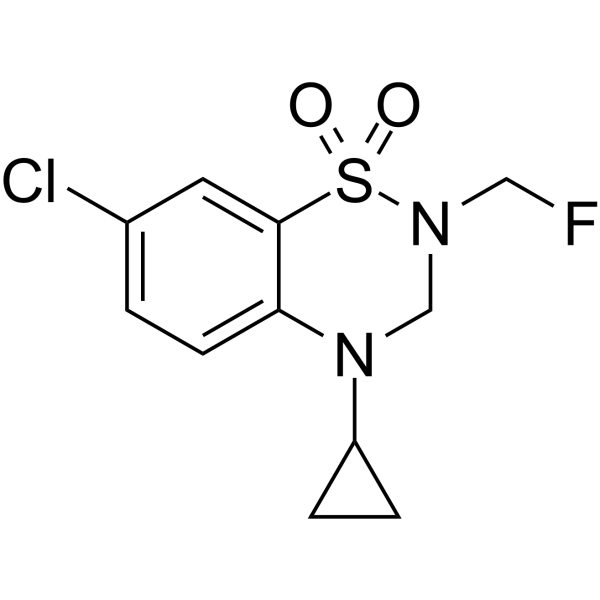
-
- HY-W075707
-
FeTCPP
1 Publications Verification
Iron(III) meso-Tetra(4-carboxyphenyl)porphine chloride
|
Biochemical Assay Reagents
|
Others
|
|
FeTCPP (Iron(III) meso-Tetra(4-carboxyphenyl)porphine chloride) is a metallic porphyrin compound formed by the coordination of a central iron ion (Fe 3+) with four 4-carboxyphenylporphyrins (TCPP). FeTCPP can be used as a catalyst for catalytic, electrochemical, photochemical and biomedical research. FeTCPP has high photocatalytic performance for p-nitrophenol under visible light. FeTCPP also has peroxisase-like activity, which is used in bionic catalysis research .
|
-

-
- HY-19490
-
|
AQW-051
|
nAChR
|
Neurological Disease
|
|
VQW-765 (AQW-051) is a selective and orally active alpha-7 nicotinic acetylcholine receptor (α7-nAChR) agonist with a pKD value of 7.56 to recombinantly expressed human α7-nAChR. VQW-765 shows anxiolytic-like effect in vivo. VQW-765 can be used for the research of anxiety disorder and acute performance anxiety .
|
-

-
- HY-B1124
-
|
|
Adenylate Cyclase
Dopamine Transporter
|
Neurological Disease
|
|
Fipexide, a parachloro-phenossiacetic acid derivative, is an orally active nootropic agent. Fipexide reduces striatal adenylate cyclase activity. Fipexide has positive effect on cognitive performance by dopaminergic neurotransmission. Fipexide is used for senile dementia research. Fipexide acts as a chemical inducer in callus formation, shoot regeneration and Agrobacterium infection .
|
-

-
- HY-B1124A
-
|
|
Adenylate Cyclase
Dopamine Transporter
|
Neurological Disease
|
|
Fipexide hydrochloride, a parachloro-phenossiacetic acid derivative, is an orally active nootropic agent. Fipexide hydrochloride reduces striatal adenylate cyclase activity. Fipexide hydrochloride has positive effect on cognitive performance by dopaminergic neurotransmission. Fipexide hydrochloride is used for senile dementia research. Fipexide hydrochloride acts as a chemical inducer in callus formation, shoot regeneration and Agrobacterium infection .
|
-

-
- HY-144660
-
|
|
Cholinesterase (ChE)
|
Neurological Disease
|
|
AChE-IN-7 (Compound 16) is a selective and potent inhibitor of acetylcholinesterase (eeAChE IC50 = 0.045 μM; eeBuChE IC50 = 19.68 μM). AChE-IN-7 is safe in vivo and in vitro, and shows good overall pharmacokinetic performance and high bioavailability (F = 55.5%). AChE-IN-7 also has high BBB permeability .
|
-

-
- HY-B1124R
-
|
|
Adenylate Cyclase
Dopamine Transporter
|
Neurological Disease
|
|
Fipexide (Standard) is the analytical standard of Fipexide. This product is intended for research and analytical applications. Fipexide, a parachloro-phenossiacetic acid derivative, is an orally active nootropic agent. Fipexide reduces striatal adenylate cyclase activity. Fipexide has positive effect on cognitive performance by dopaminergic neurotransmission. Fipexide is used for senile dementia research. Fipexide acts as a chemical inducer in callus formation, shoot regeneration and Agrobacterium infection .
|
-

-
- HY-15344
-
|
|
Others
|
Neurological Disease
Metabolic Disease
|
|
Ketone monoester is an orally available ketone monoester that serves as a source of nutritional ketones. Ketone monoester increases plasma beta-hydroxybutyrate, acetoacetate, blood glucose, blood sodium, and blood creatinine levels in mouse models. Ketone monoester has the potential to improve athletic performance and endurance in animals. Ketone monoester partially prevents myasthenia in septic mice. Ketone monoester may also be used to study Parkinson's disease or diabetes .
|
-
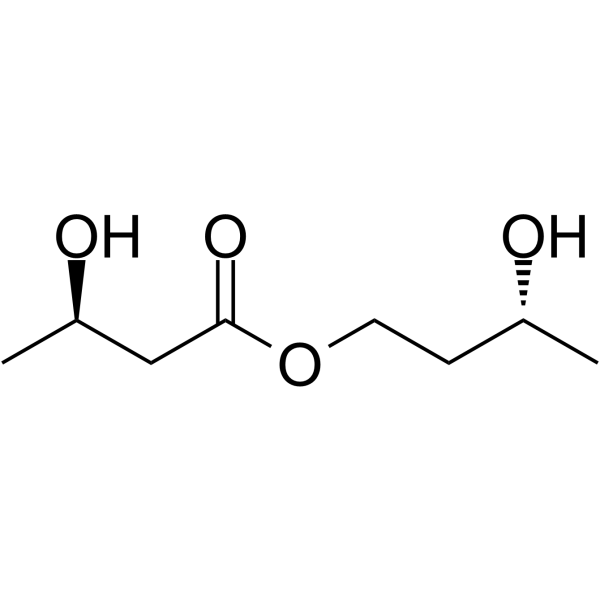
-
- HY-106150
-
|
EMD-96785
|
Biochemical Assay Reagents
|
Others
|
|
Eniporide (EMD 96785) is a Na(+)/H(+) exchange (NHE) inhibitor. Eniporide specifically inhibits the NHE-1 isoform. Eniporide improves cardiac performance inhibition associated with myocardial ischemia/reperfusion in animals, and limits infarct size in experimental models. Eniporide regulates cardiac performance and high-energy phosphate content in clinically relevant pig models of CPB and cardiac arrest .
|
-
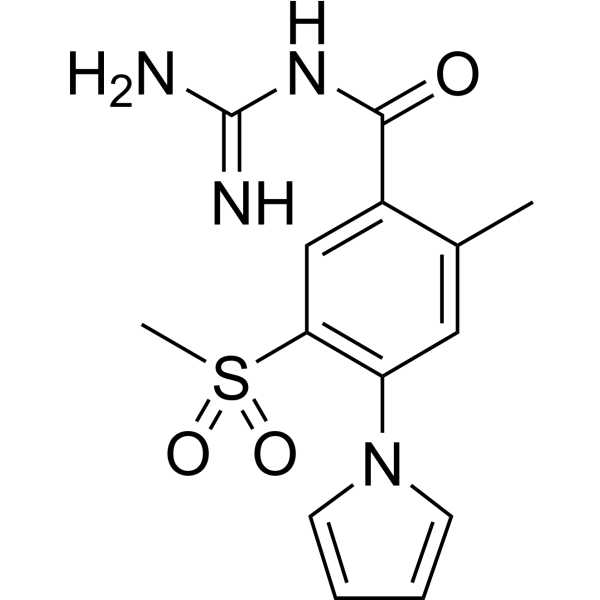
-
- HY-N6070
-
|
|
Biochemical Assay Reagents
|
Others
|
|
Ricinoleic acid (purity≥85%), a hydroxy fatty acid, is an attractive feedstock for the production of high-performance lubricants, cosmetics, polymers, surfactants, and coatings .
|
-
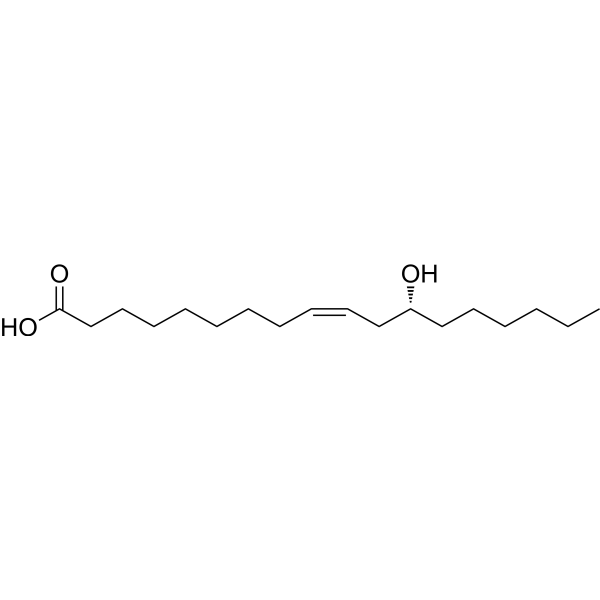
-
- HY-16675
-
|
Docetaxel Impurity 2
|
Microtubule/Tubulin
|
Cancer
|
|
7-Epi-10-oxo-docetaxel (Docetaxel Impurity 2) is a impurity of docetaxel detected by high performance liquid chromatography (HPLC).
|
-
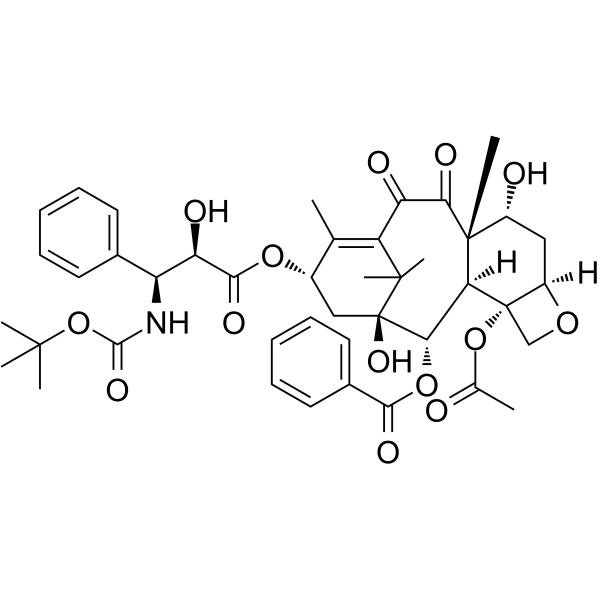
-
- HY-W008721
-
|
|
Biochemical Assay Reagents
|
Others
|
|
4,4'-Biphthalic anhydride (BPDA) is a rigid symmetrical polyamide used in the production of high-performance polymers, such as polyimide products and their composites .
|
-

-
- HY-17578
-
|
L-688786
|
Fungal
Antibiotic
|
Infection
|
|
Pneumocandin B0(L-688786), a key intermediate in the synthesis of the antifungal agent, Cancidas, has led to the identification of several materials with potential for improved performance.
|
-
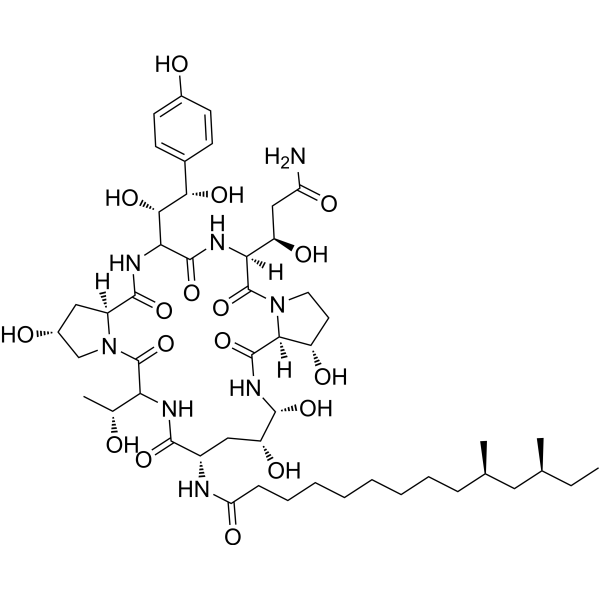
-
- HY-100511
-
|
3,3',4,4'-Benzophenonetetracarboxylic acid
|
Others
|
Others
|
|
Benzophenonetetracarboxylic acid (3,3',4,4'-Benzophenonetetracarboxylic acid) is particularly useful in the preparation of high performance polyimides and also useful as curing agents for epoxy resins .
|
-
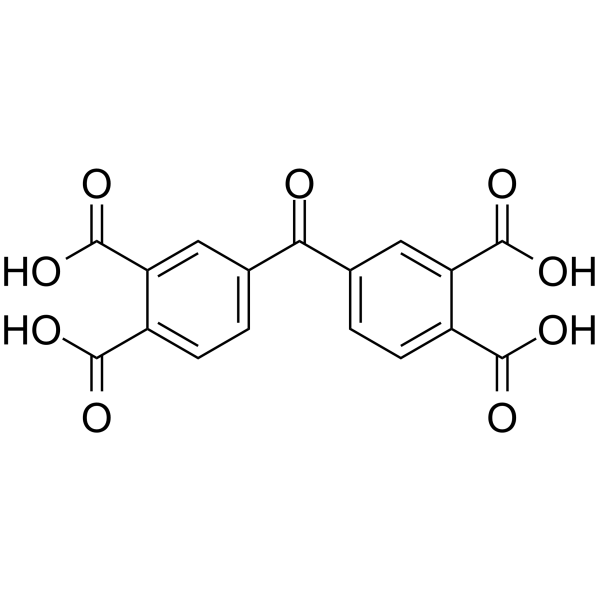
-
- HY-160985
-
|
|
Parasite
|
Others
|
|
Lemidosul is an anti-trypanosomiasis compound that can be further optimized for its performance as an anti-trypanosomiasis drug by means of a computer-aided drug design (CADD) approach .
|
-

-
- HY-W018161
-
|
|
Endogenous Metabolite
|
Others
|
|
Hexadecanedioic acid is covalently linked to Sepharose 4B, shows better performance in terms of specificity than dye-based resins and could be used for depletion of SA from plasma samples.
|
-

-
- HY-103424
-
|
|
Dopamine Receptor
|
Neurological Disease
|
|
A-412997 dihydrochloride is a selective dopamine D4 receptor agonist. A-412997 dihydrochloride improves cognitive performance in rats and can be used in the research of psychiatric diseases .
|
-
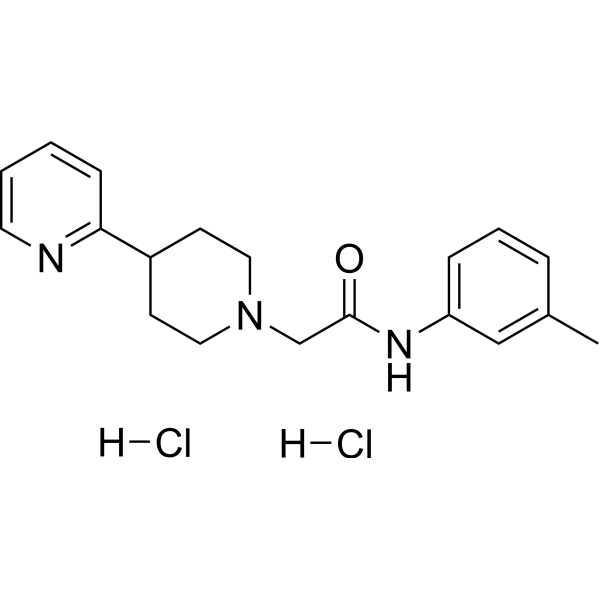
-
- HY-135737
-
|
|
Others
|
Others
|
|
Dicaprylyl carbonate, a solid, plant-derived fat, is a dry emollient. Dicaprylyl carbonate has excellent dermatological compatibility and a comprehensive performance profile, such as solubilizing and dispersing ability for sun-care filters .
|
-
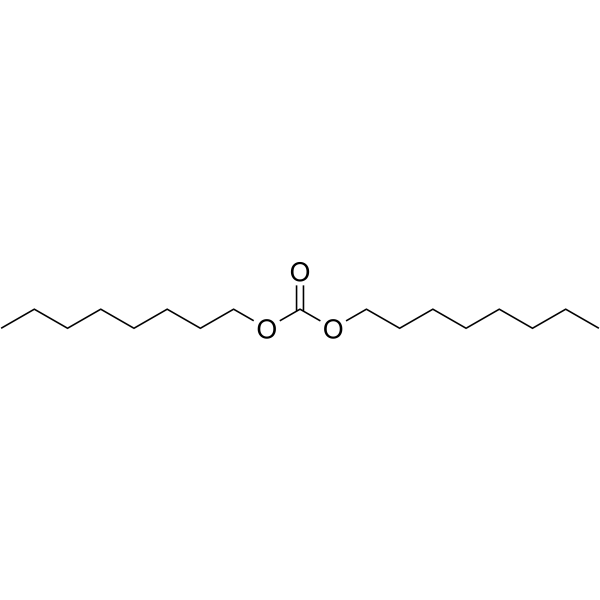
-
- HY-100784
-
|
|
EAAT
|
Neurological Disease
|
|
Dihydrokainic acid (DHK) is a glutamate transporter GLT1 (EAAT2) inhibitor. Dihydrokainic acid impairs novel object recognition (NOR) memory performance in mice. Dihydrokainic acid also shows epileptogenic effects .
|
-
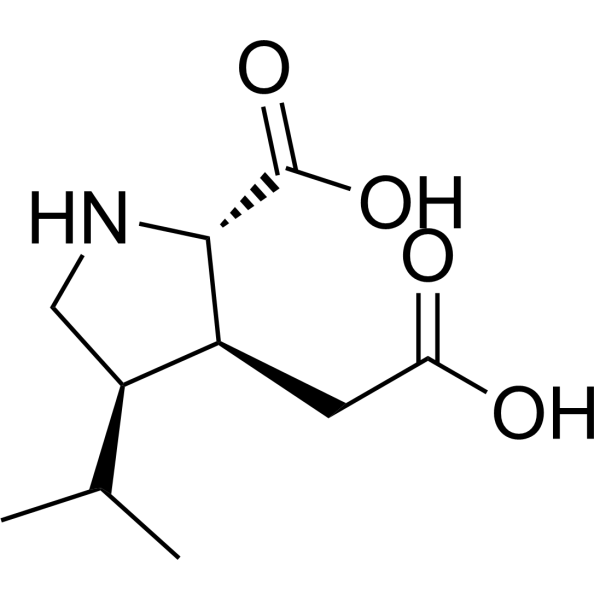
-
- HY-W027544
-
|
|
Fluorescent Dye
|
Others
|
|
MCA is a coumarin derivative. MCA quantitates platelet-activating factor by high-performance liquid chromatography with fluorescent detection. MCA can modify FRET peptide substrates for analyzing protease activities .
|
-
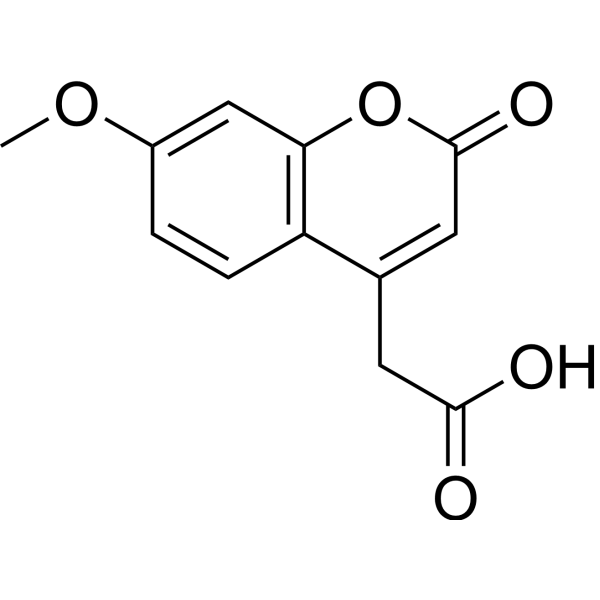
-
- HY-149883
-
|
|
Others
|
Others
|
|
IZS-L is a amino acid-derived corrosion inhibitor. IZS-L exhibits corrosion inhibition performance for metal at longer immersion. IZSs, the series of corrosion inhibitors, inhibit mild steel corrosion through the formation of an inhibitor film on the metal surface .
|
-

-
- HY-116507
-
|
|
nAChR
|
Neurological Disease
|
|
AZD0328 is a selective α7 nAChR partial agonist. AZD0328 selectively enhances midbrain dopaminergic neuronal activity and enhances cortical dopamine levels in rats. AZD0328 improves cognitive performance .
|
-

-
- HY-W018161S
-
|
|
Endogenous Metabolite
|
Others
|
|
Hexadecanedioic acid-d28 is the deuterium labeled Hexadecanedioic acid. Hexadecanedioic acid is covalently linked to Sepharose 4B, shows better performance in terms of specificity than dye-based resins and could be used for depletion of SA from plasma samples.
|
-
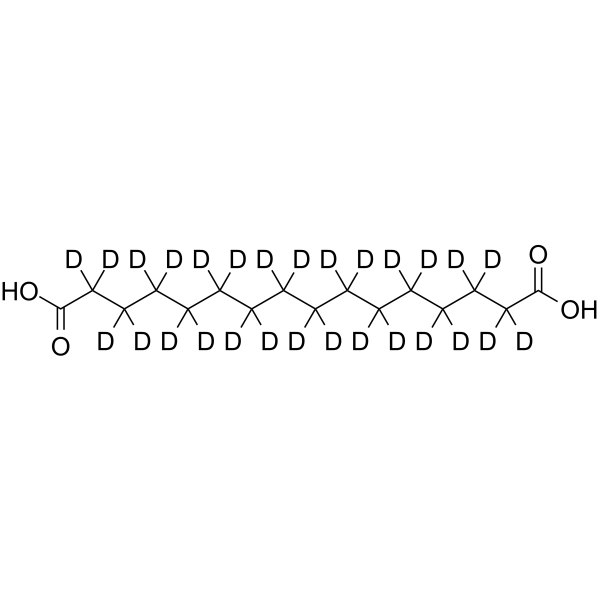
-
- HY-123307
-
|
Xylafop
|
Acetyl-CoA Carboxylase
|
Others
|
|
Quizalofop (Xylafop) is a herbicide that inhibits acetyl-CoA carboxylase (ACCase) to reduce the synthesis of fatty acids. Quizalofop can be used to screen EMS (HY-W015854) mutated microalgae for research on improving the performance of microalgae biofuel production .
|
-
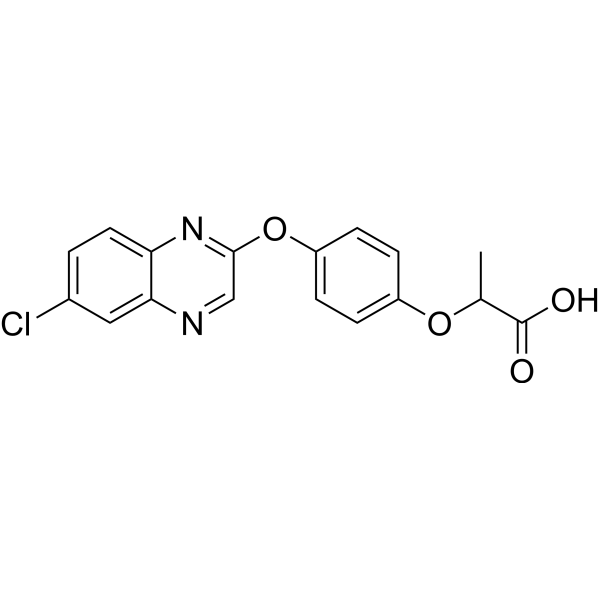
-
- HY-W009169
-
|
BTDA
|
Others
|
Others
|
|
Benzophenonetetracarboxylic dianhydride is widely used in the synthesis of high-performance polyimides and other polymer materials. Benzophenonetetracarboxylic dianhydride reacts with various diamine compounds to form oligoimide chains. These oligimide chains can modify graphene oxide (Go) and enhance its properties .
|
-
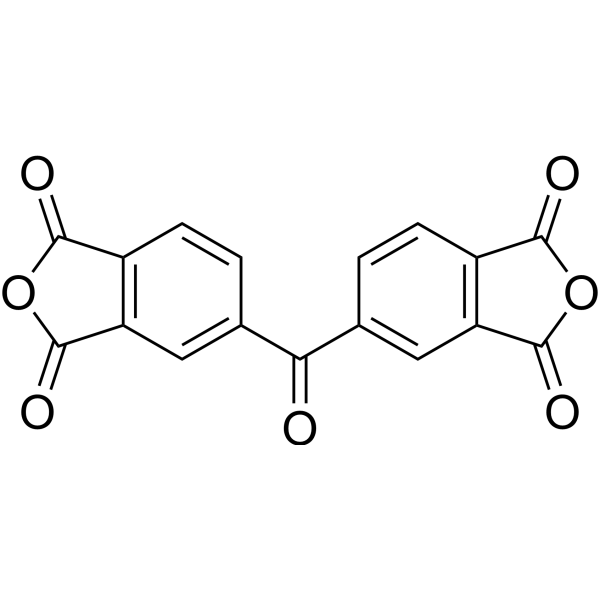
-
- HY-P99216
-
|
PF-04360365; RN 1219
|
EGFR
|
Neurological Disease
|
|
Ponezumab (PF-04360365) is a humanised anti-amyloid IgG2 monoclonal antibody. Ponezumab reduces Aβ levels in the central nervous system and improves performance in mice in various models of learning and memory. Ponezumab can be used in study of Alzheimer's disease .
|
-

-
- HY-P6008
-
|
MLN peptide
|
Calcium Channel
|
Cardiovascular Disease
|
|
Myoregulin (MLN peptide) is a member of the regulin family. Myoregulin regulates muscle performance by modulating intracellular calcium handling. Myoregulin interactes directly with sarcoplasmic reticulum Ca 2+-ATPase (SERCA) and impedinf Ca 2+ uptake into the sarcoplasmic reticulum .
|
-

-
- HY-B1713A
-
|
DL-(±)-Ornithine hydrochloride
|
Amino Acid Derivatives
|
Metabolic Disease
|
|
DL-Ornithine hydrochloride is the hydrochloride salt form of DL-Ornithine. DL-Ornithine hydrochloride is used as ergogenic supplements. DL-Ornithine hydrochloride prevents exercise induced muscle damage, influences the secretion of anabolic hormones, supply of fuel during exercise and mental performance during stress related tasks .
|
-

-
- HY-N6070A
-
|
|
Biochemical Assay Reagents
|
Others
|
|
Ricinoleic acid (purity≥99%), a hydroxy fatty acid, is an attractive feedstock for the production of high-performance lubricants, cosmetics, polymers, surfactants, and coatings. Ricinoleic acid has analgesic properties, pro- or anti-inflammatory effects, and antagonistic activity against the prostaglandin E3 receptor .
|
-
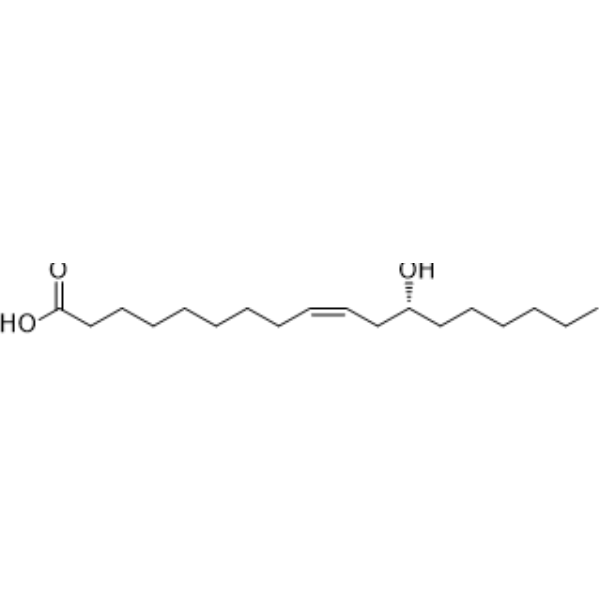
-
- HY-N6070AR
-
|
|
Biochemical Assay Reagents
|
Others
|
|
Ricinoleic acid (purity≥99%) (Standard) is the analytical standard of Ricinoleic acid (purity≥99%). This product is intended for research and analytical applications. Ricinoleic acid (purity≥99%), a hydroxy fatty acid, is an attractive feedstock for the production of high-performance lubricants, cosmetics, polymers, surfactants, and coatings .
|
-

-
- HY-78035
-
|
Methylmaleic anhydride
|
Biochemical Assay Reagents
|
Others
|
|
Citraconic anhydride (Methylmaleic anhydride) is a derivative of maleic anhydride. Citraconic anhydride is utilized to block the proteins amino groups reversibly, stabilizes certain enzymes and improves their catalytic performance, or to reverse the effects of formalin fixation in tissue sections. Citraconic anhydride is irritating for skin and eyes .
|
-

-
- HY-121705
-
|
|
Endogenous Metabolite
|
Inflammation/Immunology
|
|
Propionyl-L-carnitine is a carnitine derivative and has a high affinity for muscular carnitine transferase. Propionyl-L-carnitine increases cellular carnitine content, thereby allowing free fatty acid transport into the mitochondria. Propionyl-L-carnitine alleviates the symptoms of PAD through a metabolic pathway, thereby improving exercise performance .
|
-
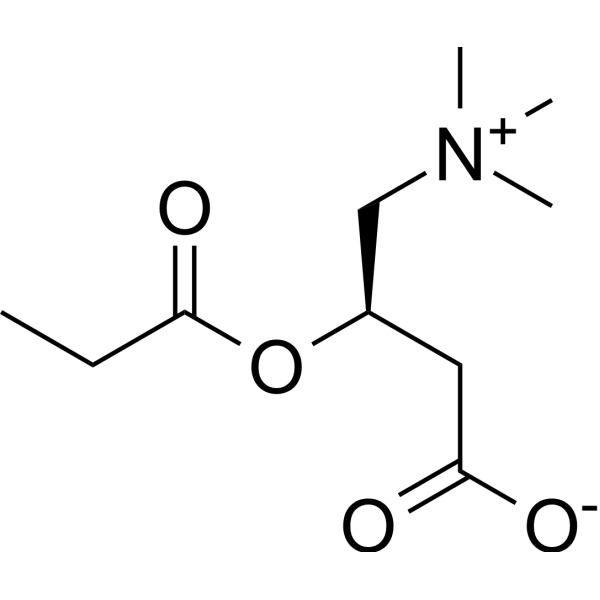
-
- HY-P6008A
-
|
MLN peptide TFA
|
Calcium Channel
|
Cardiovascular Disease
|
|
Myoregulin (MLN peptide) TFA is a member of the regulin family. Myoregulin TFA regulates muscle performance by modulating intracellular calcium handling. Myoregulin TFA interactes directly with sarcoplasmic reticulum Ca 2+-ATPase (SERCA) and impedinf Ca 2+ uptake into the sarcoplasmic reticulum .
|
-

-
- HY-N3383
-
|
Ligstroside
|
Mitochondrial Metabolism
|
Neurological Disease
|
|
Ligustroside (Ligstroside), a secoiridoid derivative, has outstanding performance on mitochondrial bioenergetics in models of early Alzheimer's disease (AD) and brain ageing by mechanisms that may not interfere with Aβ production. Ligustroside significantly inhibits nitric oxide production in lipopolysaccharide-activated RAW264.7 macrophages .
|
-
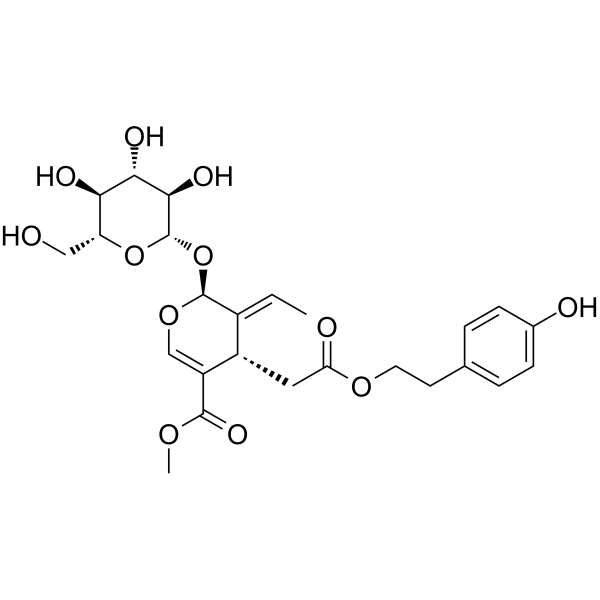
-
- HY-144314
-
|
|
Estrogen Receptor/ERR
|
Cancer
|
|
PSDalpha is an ERα degrader conjugating photosensitizer (PS), triphenylamine benzothiadiazole (TB) and 17β-estradiol via an acetylene bond. PSDalpha shows excellent anti-proliferation performance on MCF-7 cells. The maximum absorption wavelength of PSDalpha in the visible region is located at 465 nm .
|
-

-
- HY-103374
-
|
(-)-Eseroline phenylcarbamate; (-)-Phenserine
|
Cholinesterase (ChE)
Amyloid-β
|
Neurological Disease
|
|
Phenserine ((-)-Eseroline phenylcarbamate) is a derivative of Physostigmine and is a potent, noncompetitive, long-acting and selective AChE inhibitor. Phenserine reduces β-amyloid precursor protein (APP) and β-amyloid peptide (Aβ) formation. Phenserine improves cognitive performance and attenuates the progression of Alzheimer's disease .
|
-
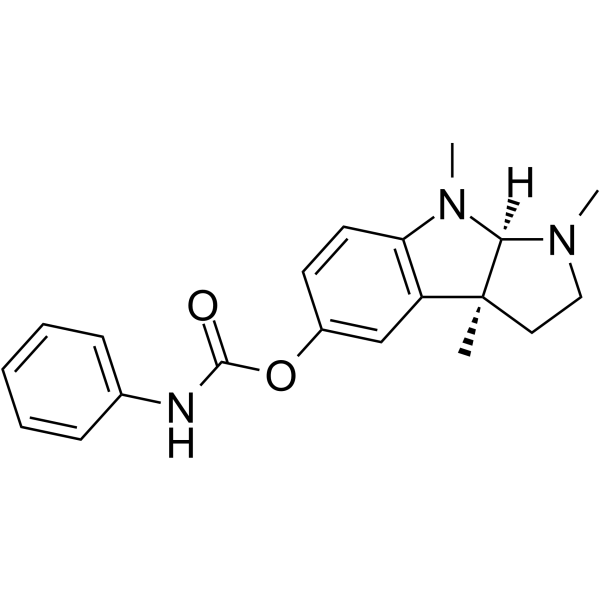
-
- HY-162113
-
|
|
Bacterial
|
Infection
|
|
Antibacterial agent 174 (Compound 5g) is a antibacterial agent. Antibacterial agent 174 has potent anti-infective potential in vivo and appreciable pharmacokinetic profiles. Highly active antibacterial agent 174 has favorable biofilm removal performance, low hemolysis and acceptable mammalian cell toxicity .
|
-

-
- HY-116881
-
|
|
mAChR
|
Neurological Disease
|
|
SCH 57790 is a selective antegonist for muscarinic M2 receptor, which increases acetylcholine release, and thus improves cognitive performance. SCH 57790 reverses Scopolamine (HY-N0296)-induced memory deficits in mice, without significant toxicity (100 mg/kg).
|
-

-
- HY-161608
-
|
|
Myosin
|
Cardiovascular Disease
|
|
Myosin modulator 1 (Compound B141) is a modulator for myosin, that inhibits ATPase in rabbits psoas, porcine atria and in porcine ventricle, with IC25s of 0.42, 0.13 and 3.09 μM, respectively. Myosin modulator 1 regulates systolic cardiac performance in Sprague Dawley rats .
|
-

-
- HY-161609
-
|
|
Myosin
|
Cardiovascular Disease
|
|
Myosin modulator 2 (Compound B172) is a modulator for myosin, that inhibits ATPase in rabbits psoas, porcine atria and in porcine ventricle, with IC25s of 2.013, 2.94 and 20.93 μM, respectively. Myosin modulator 2 regulates systolic cardiac performance in Sprague Dawley rats .
|
-

-
- HY-100968
-
|
|
Dopamine Receptor
|
Neurological Disease
|
|
GBR 12783 dihydrochloride is a specific, potent and selective dopamine uptake inhibitor that inhibits the [ 3H]dopamine uptake by rat and mice striatal synaptosomes with IC50s of 1.8 nM and 1.2 nM, respectively. GBR 12783 dihydrochloride can improve memory performance and increase hippocampal acetylcholine release in rats .
|
-

-
- HY-W008610
-
|
|
Dopamine Receptor
|
Neurological Disease
|
|
GBR 12783 is a specific, potent and selective dopamine uptake inhibitor that inhibits the [ 3H]dopamine uptake by rat and mice striatal synaptosomes with IC50s of 1.8 nM and 1.2 nM, respectively. GBR 12783 can improve memory performance and increase hippocampal acetylcholine release in rats .
|
-

-
- HY-160581
-
|
|
Liposome
|
Others
|
|
OH-C-Chol is a cationic liposome that serves as a siRNA delivery vehicle. OH-C-Chol (LP-C) and OH-NC-Chol (LP-NC)/siRNA complexes (lipoplexes) showed better performance than NP-C and NP-NC/siRNA complexes (nanocomplexes), respectively. ) greater gene silencing effect .
|
-
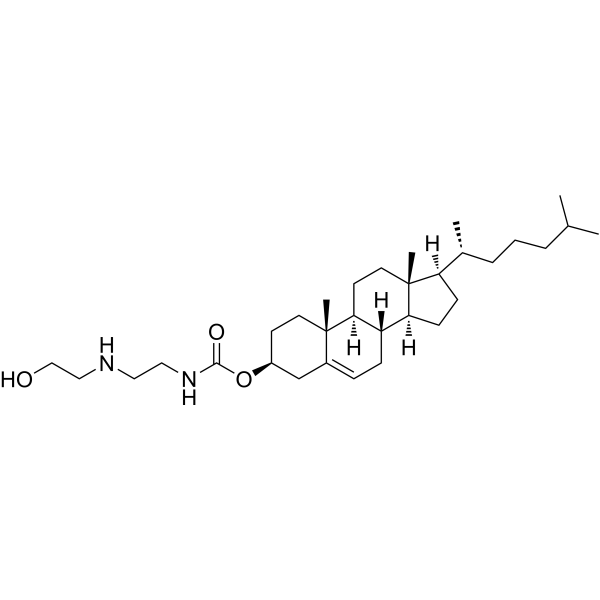
-
- HY-N0391A
-
|
|
Biochemical Assay Reagents
Endogenous Metabolite
|
Others
|
|
L-Citrulline (DL-malate) is an organic compound commonly used as a nutritional supplement. It boosts the body's production of nitrogen oxides, improves circulation and athletic performance, and reduces muscle fatigue. In addition, L-Citrulline DL-malate also plays an important role in some industrial fields, for example, it is used in the field of agriculture to enhance plant immunity.
|
-

-
- HY-114856
-
|
|
Biochemical Assay Reagents
|
Others
|
|
DTBT is a six-membered heterocyclic ring that is commonly used in the preparation of organic electronic devices, such as P-type organic semiconductors (OFETs) and P-type organic photodiodes (OLEDs). DTBT has good performance in electron transmission and photoelectric conversion. DTBT polymerizes to form donor-acceptor polymers, which are used to prepare solar cells .
|
-
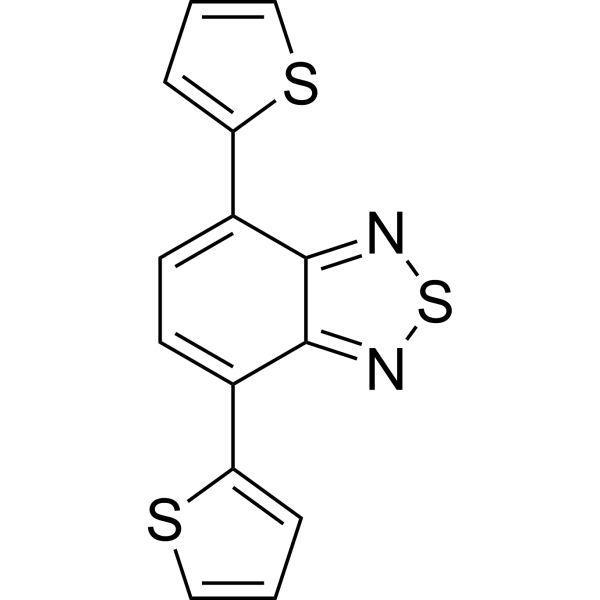
-
- HY-149884
-
|
|
Others
|
Others
|
|
IZS-P is an amino acid-derived corrosion inhibitor, based on the green chemistry principles. IZS-P inhibits mild steel corrosion via forming an inhibitor film on the metal surface. IZS series inhibitors following a corrosion inhibition performance as: IZS-P (82.46%) > IZS-M (67.19%) > IZS-L (24.77%) .
|
-
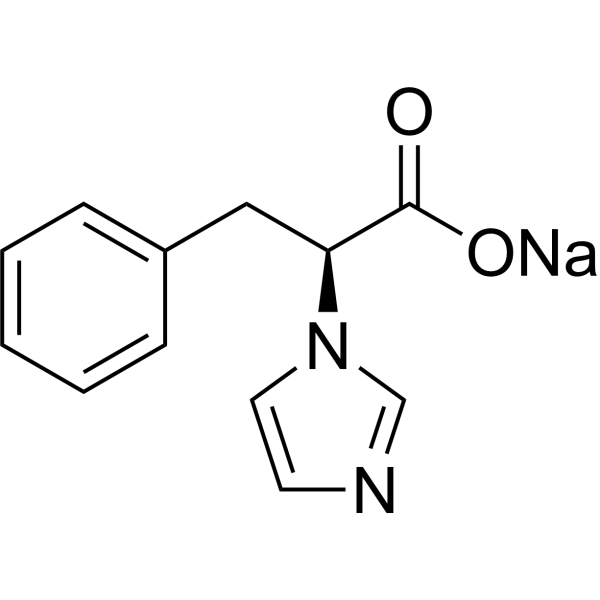
- HY-149885
-
|
|
Others
|
Others
|
|
IZS-M is an amino acid-derived corrosion inhibitor, based on the green chemistry principles. IZS-M inhibits mild steel corrosion via forming an inhibitor film on the metal surface. IZS series inhibitors following a corrosion inhibition performance as: IZS-P (82.46%) > IZS-M (67.19%) > IZS-L (24.77%) .
|
-
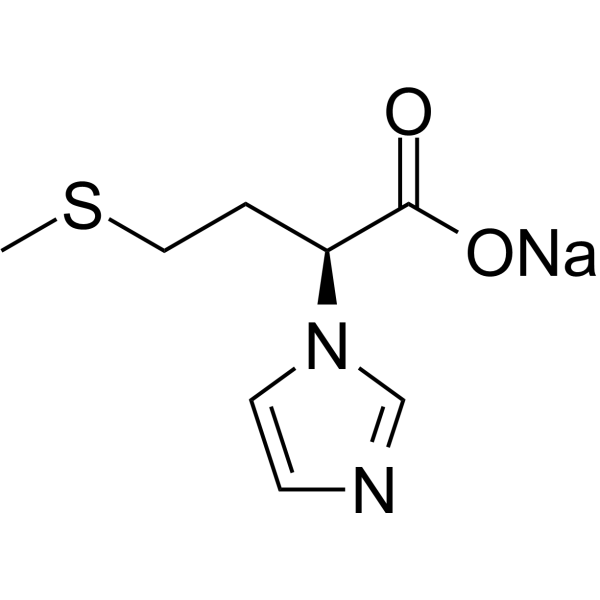
- HY-N11872
-
|
|
Others
|
Neurological Disease
|
|
Suffruticosol A is a neuroprotective agent that restores scopolamine-induced cellular neurodegenerative damage. Suffruticosol A ameliorates hippocampal cholinergic deficits and partially enhances BDNF signaling. Suffruticosol A has neuromodulatory effects in a Scopolamine (HY-N0296)-induced model, restoring memory and cognitive performance in mice. Suffruticosol A can be isolated from seeds of P. lactiflora .
|
-
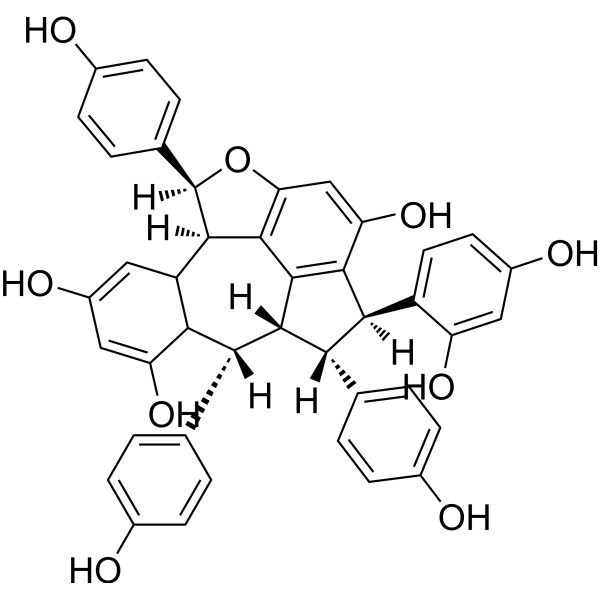
- HY-101415
-
|
Ubiquinone Q9; CoQ9; Ubiquinone 9
|
Apoptosis
Endogenous Metabolite
|
Cardiovascular Disease
|
|
Coenzyme Q9 (Ubiquinone Q9), the major form of ubiquinone in rodents, is an amphipathic molecular component of the electron transport chain that functions as an endogenous antioxidant. Coenzyme Q9 attenuates the diabetes-induced decreases in antioxidant defense mechanisms. Coenzyme Q9 improves left ventricular performance and reduces myocardial infarct size and cardiomyocyte apoptosis .
|
-
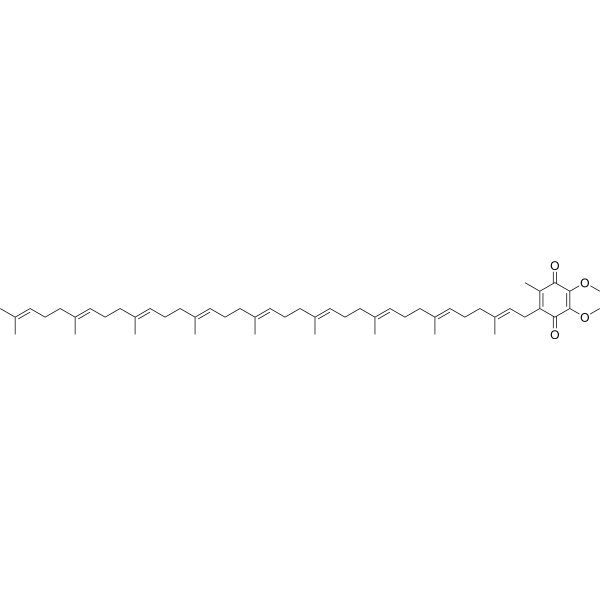
- HY-D2268
-
|
|
Fluorescent Dye
Amyloid-β
|
Neurological Disease
|
|
QM-FN-SO3 is a BBB-penetrable near-infrared (NIR) aggregation-induced emission (AIE)-active probe for Aβ plaques. QM-FN-SO3 can be used for in vivo detection of Aβ plaques. QM-FN-SO3 has ultra-high S/N ratio, binding affinity, and high-performance NIR emission .
|
-
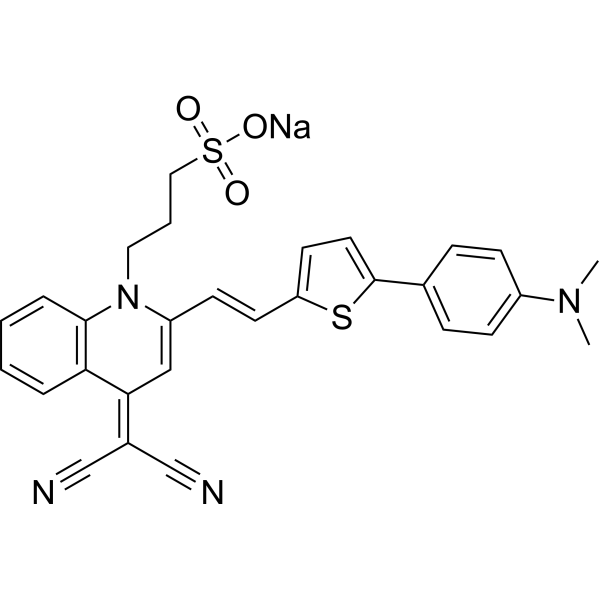
- HY-W004293
-
|
Tridecyl Alcohol
|
Biochemical Assay Reagents
|
Others
|
|
1-Tridecanol is an organic compound commonly used as a surfactant, lubricant, and stabilizer, among others. It can be used in some cleaning products, preservatives and plastic additives, and can help enhance their performance and stability. In addition, the compound is used in some industrial fields, for example in the manufacture of products such as cellulose and paints. Although the compound has no direct medical application, it plays an important role in consumer products and industrial production.
|
-
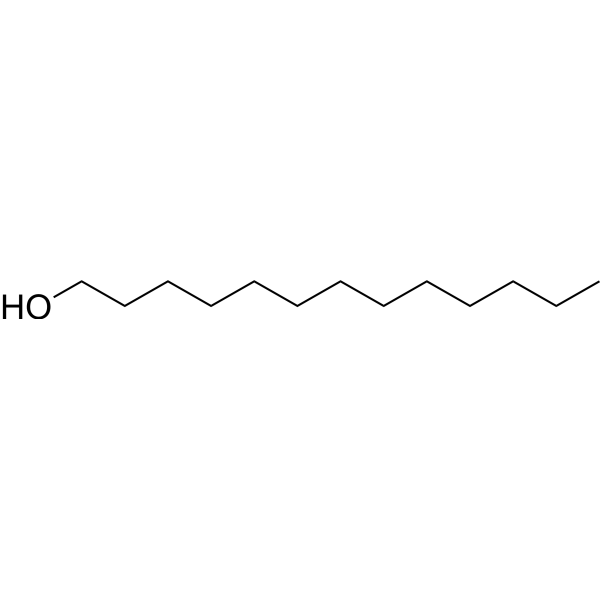
- HY-W250303
-
|
Hydroxybutanedioic acid disodium salt; E 296 disodium salt
|
Biochemical Assay Reagents
|
Others
|
|
Sodium DL-Malate is an organic compound commonly used as a food additive, buffer and nutritional supplement. It contains sodium and malic acid. Malic acid disodium salt has several properties suitable for these applications, including the ability to enhance food flavor, improve texture and regulate acidity. Additionally, it can be used as a dietary supplement due to its potential health benefits, including improved energy production, reduced fatigue, and enhanced athletic performance.
|
-
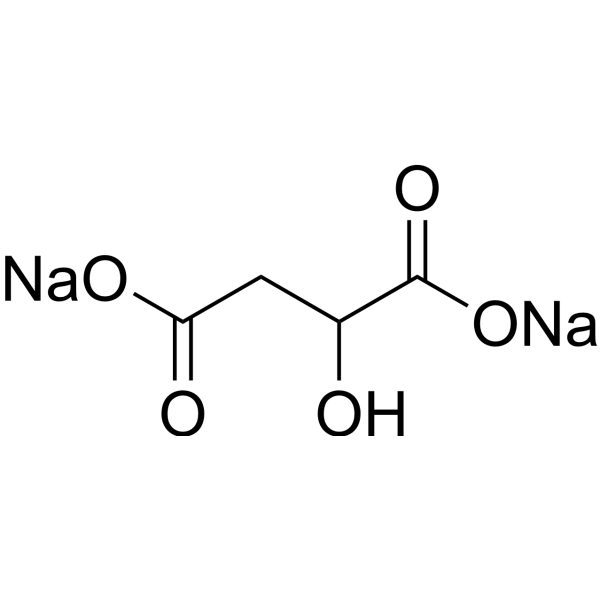
- HY-D2268A
-
|
|
Amyloid-β
Fluorescent Dye
|
Neurological Disease
|
|
QM-FN-SO3 ammonium is a BBB-penetrable near-infrared (NIR) aggregation-induced emission (AIE)-active probe for Aβ plaques. QM-FN-SO3 ammonium can be used for in vivo detection of Aβ plaques. QM-FN-SO3 ammonium has ultra-high S/N ratio, binding affinity, and high-performance NIR emission .
|
-
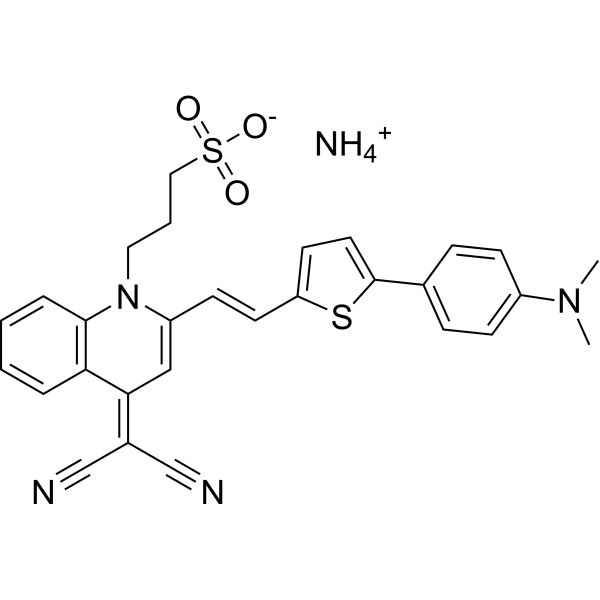
- HY-W250310
-
|
L-Arginine alpha-ketoglutarate
|
Biochemical Assay Reagents
|
Others
|
|
L-Arginine α-ketoglutarate, often abbreviated as AAKG, is a dietary supplement that combines arginine L-Arginine and α-ketoglutarate, a key intermediate in the Krebs cycle. L-arginine is a precursor of nitric oxide, which regulates blood flow and promotes vasodilation, while α-ketoglutarate is involved in energy production and protein synthesis. Together, these compounds are thought to support improved muscle recovery, increased endurance, and enhanced athletic performance.
|
-
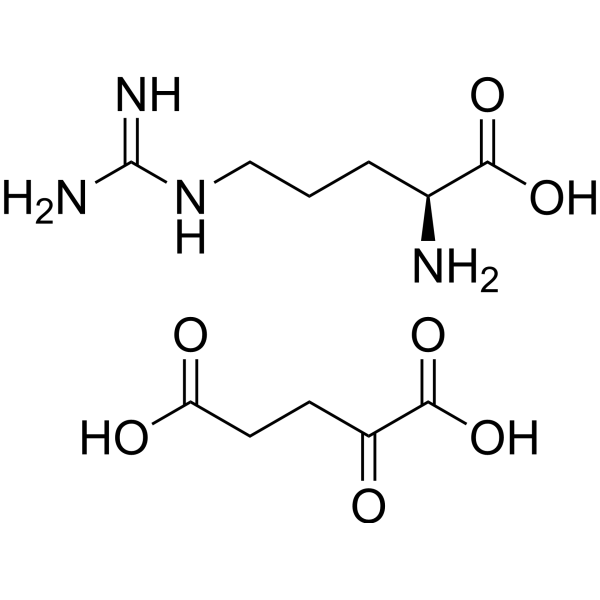
- HY-W027544S
-
|
7-Methoxy-d3-2-oxo-2H-1-benzopyran-4-acetic acid; 7-Methoxy-d3-2H-chromen-2-one-4-acetic acid
|
Isotope-Labeled Compounds
|
Others
|
|
(7-Methoxy-2-oxo-2H-chromen-4-yl)-acetic acid-d3 is the deuterium labeled MCA[1]. MCA is a coumarin derivative. MCA quantitates platelet-activating factor by high-performance liquid chromatography with fluorescent detection. MCA can modify FRET peptide substrates for analyzing protease activities[2][3].
|
-
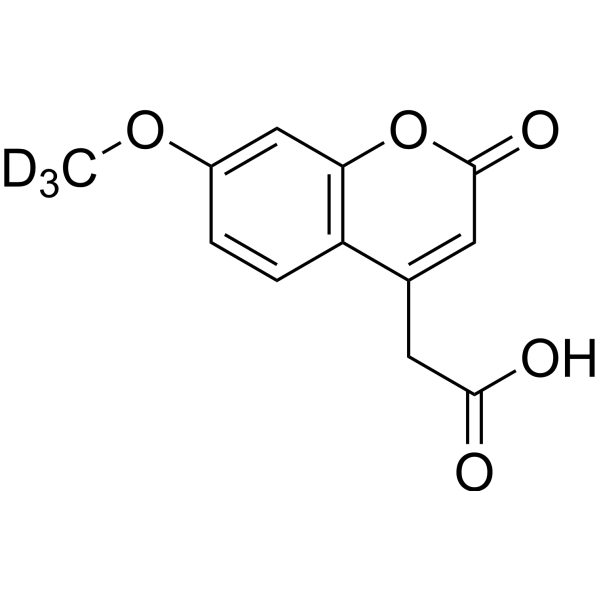
- HY-E70318
-
|
Immobilized Penicillin G acylase
|
Endogenous Metabolite
|
Others
|
|
AMK-GX (Immobilized Penicillin G acylase) is an immobilized penicillin acylase with improved temperature and pH stability. AMK-GX has reusable performance and high recovery rates, retaining much of its original activity after 12 cycles. Among them, AMK-GX can catalyze penicillin G (PG) to generate 6-aminopenicillanic acid (6-APA) and 7-aminodeacetoxycephalosporanic acid, which are key intermediates for β-lactam antibiotics .
|
-

- HY-158220
-
|
HAMA
|
Biochemical Assay Reagents
|
Others
|
|
Hyaluronic acid Methacryloyl (HAMA) is methacrylated hyaluronic acid that is biocompatible. Hyaluronic acid Methacryloyl is also used as a 3D printing hydrogel ink, which has the characteristics of fast photosensitive response, fast gelation speed and stable hydrogel performance. Hyaluronic acid Methacryloyl can quickly induce gelation with lithium phenyl-2,4,6-trimethylbenzoylphosphinate (LAP) under UV irradiation. The combination of Hyaluronic acid Methacryloyl and tissue-specific extracellular matrix (ECM) materials (such as pancreatic extracellular matrix (pECM)) will become an important source material for organoid culture .
|
-

- HY-W250127
-
|
Terephthalic acid disodium salt
|
Biochemical Assay Reagents
|
Others
|
|
Disodium terephthalate belongs to the class of organic salts. It is commonly used as a catalyst or intermediate in the production of a variety of industrial and consumer products, including polyethylene terephthalate (PET) plastics, polyester fibers and films. Disodium terephthalate has excellent thermal stability, chemical resistance and mechanical properties, making it ideal for high performance applications. Additionally, it is non-toxic, non-flammable and environmentally friendly, making it an attractive alternative to other petroleum-based chemicals. In the food and pharmaceutical industries, Disodium terephthalate is used as a pH regulator and buffer. It is generally considered safe for use in food and pharmaceutical applications by regulatory agencies such as the FDA.
|
-

- HY-15344A
-
|
|
Others
|
Neurological Disease
|
|
(S,S)-Ketone monoester is a (S,S)-enantiomer of Ketone monoester (HY-15344). Ketone monoester elevates the AcAc and acetone levels, thereby produces sustained ketosis and significantly delays central nervous system oxygen toxicity (CNS-OT) seizures .
|
-
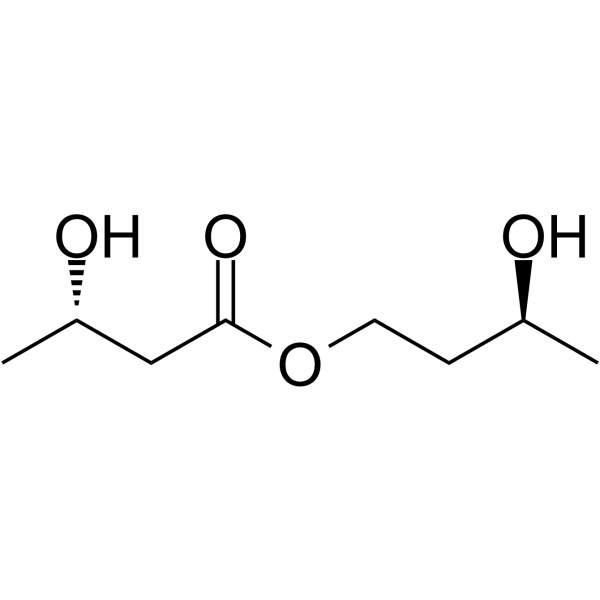
- HY-125172
-
|
Polyglutamine Aggregation inhibitor III
|
Others
|
Others
|
|
C2-8 is an inhibitor of polyglutamine (polyQ) aggregation (IC50s=25 and 0.05 μM for recombinant HDQ51 and in PC12 cells, respectively). It also inhibits polyQ aggregation in organotypic hippocampal slice cultures isolated from R6/2 transgenic mice and reduces neurodegeneration in a dose-dependent manner in a Drosophila model of Huntington's disease. C2-8 (100 and 200 mg/kg) reduces huntingtin aggregate size, reduces neuronal atrophy, and improves motor performance in a rotarod test in the R6/2 transgenic mouse model of Huntington's disease.
|
-

- HY-W027544S1
-
|
5-(Dimethyl-d6-amino)-N-(prop-2-ynyl)naphthalene-1-sulfonamide
|
Isotope-Labeled Compounds
|
Others
|
|
(7-Methoxy-2-oxo-2H-chromen-4-yl)-acetic acid-d6 is the deuterium labeled MCA[1]. MCA is a coumarin derivative. MCA quantitates platelet-activating factor by high-performance liquid chromatography with fluorescent detection. MCA can modify FRET peptide substrates for analyzing protease activities[2][3]. (7-Methoxy-2-oxo-2H-chromen-4-yl)-acetic acid-d6 is a click chemistry reagent, it contains an Alkyne group and can undergo copper-catalyzed azide-alkyne cycloaddition (CuAAc) with molecules containing Azide groups.
|
-
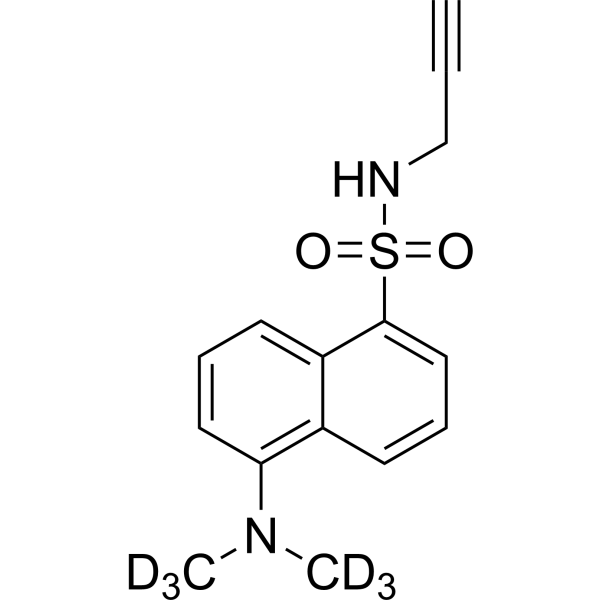
- HY-P5740
-
|
|
Bacterial
|
Infection
|
|
Cacaoidin is a glycosylated lantibiotic isolated from a Streptomyces cacaoi strain. Cacaoidin has potent antibacterial activity against Gram-positive pathogens including Clostridium difficile .
|
-
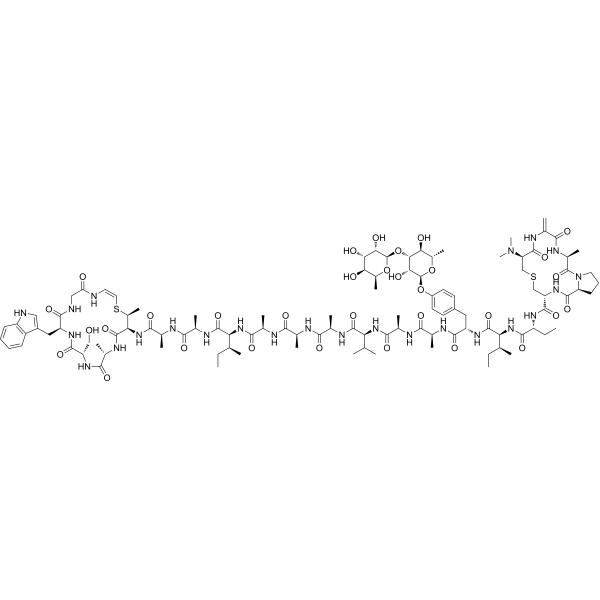
| Cat. No. |
Product Name |
Type |
-
- HY-W027544
-
|
|
Fluorescent Dyes/Probes
|
|
MCA is a coumarin derivative. MCA quantitates platelet-activating factor by high-performance liquid chromatography with fluorescent detection. MCA can modify FRET peptide substrates for analyzing protease activities .
|
-
- HY-D2268
-
|
|
Fluorescent Dyes/Probes
|
|
QM-FN-SO3 is a BBB-penetrable near-infrared (NIR) aggregation-induced emission (AIE)-active probe for Aβ plaques. QM-FN-SO3 can be used for in vivo detection of Aβ plaques. QM-FN-SO3 has ultra-high S/N ratio, binding affinity, and high-performance NIR emission .
|
-
- HY-D2268A
-
|
|
Fluorescent Dyes/Probes
|
|
QM-FN-SO3 ammonium is a BBB-penetrable near-infrared (NIR) aggregation-induced emission (AIE)-active probe for Aβ plaques. QM-FN-SO3 ammonium can be used for in vivo detection of Aβ plaques. QM-FN-SO3 ammonium has ultra-high S/N ratio, binding affinity, and high-performance NIR emission .
|
| Cat. No. |
Product Name |
Type |
-
- HY-W075707
-
FeTCPP
1 Publications Verification
Iron(III) meso-Tetra(4-carboxyphenyl)porphine chloride
|
Biochemical Assay Reagents
|
|
FeTCPP (Iron(III) meso-Tetra(4-carboxyphenyl)porphine chloride) is a metallic porphyrin compound formed by the coordination of a central iron ion (Fe 3+) with four 4-carboxyphenylporphyrins (TCPP). FeTCPP can be used as a catalyst for catalytic, electrochemical, photochemical and biomedical research. FeTCPP has high photocatalytic performance for p-nitrophenol under visible light. FeTCPP also has peroxisase-like activity, which is used in bionic catalysis research .
|
-
- HY-W008721
-
|
|
Biochemical Assay Reagents
|
|
4,4'-Biphthalic anhydride (BPDA) is a rigid symmetrical polyamide used in the production of high-performance polymers, such as polyimide products and their composites .
|
-
- HY-B1713A
-
|
DL-(±)-Ornithine hydrochloride
|
Biochemical Assay Reagents
|
|
DL-Ornithine hydrochloride is the hydrochloride salt form of DL-Ornithine. DL-Ornithine hydrochloride is used as ergogenic supplements. DL-Ornithine hydrochloride prevents exercise induced muscle damage, influences the secretion of anabolic hormones, supply of fuel during exercise and mental performance during stress related tasks .
|
-
- HY-78035
-
|
Methylmaleic anhydride
|
Biochemical Assay Reagents
|
|
Citraconic anhydride (Methylmaleic anhydride) is a derivative of maleic anhydride. Citraconic anhydride is utilized to block the proteins amino groups reversibly, stabilizes certain enzymes and improves their catalytic performance, or to reverse the effects of formalin fixation in tissue sections. Citraconic anhydride is irritating for skin and eyes .
|
-
- HY-106150
-
|
EMD-96785
|
Biochemical Assay Reagents
|
|
Eniporide (EMD 96785) is a Na(+)/H(+) exchange (NHE) inhibitor. Eniporide specifically inhibits the NHE-1 isoform. Eniporide improves cardiac performance inhibition associated with myocardial ischemia/reperfusion in animals, and limits infarct size in experimental models. Eniporide regulates cardiac performance and high-energy phosphate content in clinically relevant pig models of CPB and cardiac arrest .
|
-
- HY-W004293
-
|
Tridecyl Alcohol
|
Biochemical Assay Reagents
|
|
1-Tridecanol is an organic compound commonly used as a surfactant, lubricant, and stabilizer, among others. It can be used in some cleaning products, preservatives and plastic additives, and can help enhance their performance and stability. In addition, the compound is used in some industrial fields, for example in the manufacture of products such as cellulose and paints. Although the compound has no direct medical application, it plays an important role in consumer products and industrial production.
|
-
- HY-W250303
-
|
Hydroxybutanedioic acid disodium salt; E 296 disodium salt
|
Biochemical Assay Reagents
|
|
Sodium DL-Malate is an organic compound commonly used as a food additive, buffer and nutritional supplement. It contains sodium and malic acid. Malic acid disodium salt has several properties suitable for these applications, including the ability to enhance food flavor, improve texture and regulate acidity. Additionally, it can be used as a dietary supplement due to its potential health benefits, including improved energy production, reduced fatigue, and enhanced athletic performance.
|
-
- HY-W250310
-
|
L-Arginine alpha-ketoglutarate
|
Biochemical Assay Reagents
|
|
L-Arginine α-ketoglutarate, often abbreviated as AAKG, is a dietary supplement that combines arginine L-Arginine and α-ketoglutarate, a key intermediate in the Krebs cycle. L-arginine is a precursor of nitric oxide, which regulates blood flow and promotes vasodilation, while α-ketoglutarate is involved in energy production and protein synthesis. Together, these compounds are thought to support improved muscle recovery, increased endurance, and enhanced athletic performance.
|
-
- HY-158220
-
|
HAMA
|
3D Bioprintig
|
|
Hyaluronic acid Methacryloyl (HAMA) is methacrylated hyaluronic acid that is biocompatible. Hyaluronic acid Methacryloyl is also used as a 3D printing hydrogel ink, which has the characteristics of fast photosensitive response, fast gelation speed and stable hydrogel performance. Hyaluronic acid Methacryloyl can quickly induce gelation with lithium phenyl-2,4,6-trimethylbenzoylphosphinate (LAP) under UV irradiation. The combination of Hyaluronic acid Methacryloyl and tissue-specific extracellular matrix (ECM) materials (such as pancreatic extracellular matrix (pECM)) will become an important source material for organoid culture .
|
-
- HY-W250127
-
|
Terephthalic acid disodium salt
|
Biochemical Assay Reagents
|
|
Disodium terephthalate belongs to the class of organic salts. It is commonly used as a catalyst or intermediate in the production of a variety of industrial and consumer products, including polyethylene terephthalate (PET) plastics, polyester fibers and films. Disodium terephthalate has excellent thermal stability, chemical resistance and mechanical properties, making it ideal for high performance applications. Additionally, it is non-toxic, non-flammable and environmentally friendly, making it an attractive alternative to other petroleum-based chemicals. In the food and pharmaceutical industries, Disodium terephthalate is used as a pH regulator and buffer. It is generally considered safe for use in food and pharmaceutical applications by regulatory agencies such as the FDA.
|
| Cat. No. |
Product Name |
Target |
Research Area |
-
- HY-121705
-
|
|
Endogenous Metabolite
|
Inflammation/Immunology
|
|
Propionyl-L-carnitine is a carnitine derivative and has a high affinity for muscular carnitine transferase. Propionyl-L-carnitine increases cellular carnitine content, thereby allowing free fatty acid transport into the mitochondria. Propionyl-L-carnitine alleviates the symptoms of PAD through a metabolic pathway, thereby improving exercise performance .
|
-
- HY-P4746
-
|
|
Peptides
|
Infection
|
|
LL-37 FKR is the C-terminal fragment of LL-37. LL-37 FKR plays an important role in antibacterial performance .
|
-
- HY-P6008
-
|
MLN peptide
|
Calcium Channel
|
Cardiovascular Disease
|
|
Myoregulin (MLN peptide) is a member of the regulin family. Myoregulin regulates muscle performance by modulating intracellular calcium handling. Myoregulin interactes directly with sarcoplasmic reticulum Ca 2+-ATPase (SERCA) and impedinf Ca 2+ uptake into the sarcoplasmic reticulum .
|
-
- HY-P6008A
-
|
MLN peptide TFA
|
Calcium Channel
|
Cardiovascular Disease
|
|
Myoregulin (MLN peptide) TFA is a member of the regulin family. Myoregulin TFA regulates muscle performance by modulating intracellular calcium handling. Myoregulin TFA interactes directly with sarcoplasmic reticulum Ca 2+-ATPase (SERCA) and impedinf Ca 2+ uptake into the sarcoplasmic reticulum .
|
-
- HY-P3630
-
|
|
Peptides
|
Others
|
|
Stick Insect Hypertrehalosaemic Factor II is a synthetic peptide. Stick Insect Hypertrehalosaemic Factor II has the same FAB spectra, reversed-phase high-performance liquid chromatographic behavior, and biological behavior as the natural material. Stick Insect Hypertrehalosaemic Factor II can be used for the research of hypertrehalosaemic effect .
|
-
- HY-P5740
-
|
|
Bacterial
|
Infection
|
|
Cacaoidin is a glycosylated lantibiotic isolated from a Streptomyces cacaoi strain. Cacaoidin has potent antibacterial activity against Gram-positive pathogens including Clostridium difficile .
|
-
- HY-K0220
-
|
|
|
MCE Ni-NTA 6FF Prepacked Column is ideal for high performance purification of polyhistidine-tagged proteins expressed in E.coli, yeast, insect and mammalian expression systems.
|
-
- HY-K0234
-
1 Publications Verification
|
|
MCE Glutathione Magnetic Agarose Beads have high protein-binding capacity and stability, making it ideal for high performance purification of GST-tagged fusion proteins expressed in E. coli, yeast, insect and mammalian expression systems.
|
| Cat. No. |
Product Name |
Target |
Research Area |
-
- HY-P99216
-
|
PF-04360365; RN 1219
|
EGFR
|
Neurological Disease
|
|
Ponezumab (PF-04360365) is a humanised anti-amyloid IgG2 monoclonal antibody. Ponezumab reduces Aβ levels in the central nervous system and improves performance in mice in various models of learning and memory. Ponezumab can be used in study of Alzheimer's disease .
|
| Cat. No. |
Product Name |
Category |
Target |
Chemical Structure |
| Cat. No. |
Product Name |
Chemical Structure |
-
- HY-W018161S
-
|
|
|
Hexadecanedioic acid-d28 is the deuterium labeled Hexadecanedioic acid. Hexadecanedioic acid is covalently linked to Sepharose 4B, shows better performance in terms of specificity than dye-based resins and could be used for depletion of SA from plasma samples.
|
-

-
- HY-W027544S
-
|
|
|
(7-Methoxy-2-oxo-2H-chromen-4-yl)-acetic acid-d3 is the deuterium labeled MCA[1]. MCA is a coumarin derivative. MCA quantitates platelet-activating factor by high-performance liquid chromatography with fluorescent detection. MCA can modify FRET peptide substrates for analyzing protease activities[2][3].
|
-

-
- HY-W027544S1
-
|
|
|
(7-Methoxy-2-oxo-2H-chromen-4-yl)-acetic acid-d6 is the deuterium labeled MCA[1]. MCA is a coumarin derivative. MCA quantitates platelet-activating factor by high-performance liquid chromatography with fluorescent detection. MCA can modify FRET peptide substrates for analyzing protease activities[2][3]. (7-Methoxy-2-oxo-2H-chromen-4-yl)-acetic acid-d6 is a click chemistry reagent, it contains an Alkyne group and can undergo copper-catalyzed azide-alkyne cycloaddition (CuAAc) with molecules containing Azide groups.
|
-

| Cat. No. |
Product Name |
|
Classification |
-
- HY-W027544S1
-
|
5-(Dimethyl-d6-amino)-N-(prop-2-ynyl)naphthalene-1-sulfonamide
|
|
Alkynes
|
|
(7-Methoxy-2-oxo-2H-chromen-4-yl)-acetic acid-d6 is the deuterium labeled MCA[1]. MCA is a coumarin derivative. MCA quantitates platelet-activating factor by high-performance liquid chromatography with fluorescent detection. MCA can modify FRET peptide substrates for analyzing protease activities[2][3]. (7-Methoxy-2-oxo-2H-chromen-4-yl)-acetic acid-d6 is a click chemistry reagent, it contains an Alkyne group and can undergo copper-catalyzed azide-alkyne cycloaddition (CuAAc) with molecules containing Azide groups.
|
Your information is safe with us. * Required Fields.
Inquiry Information
- Product Name:
- Cat. No.:
- Quantity:
- MCE Japan Authorized Agent:











































































